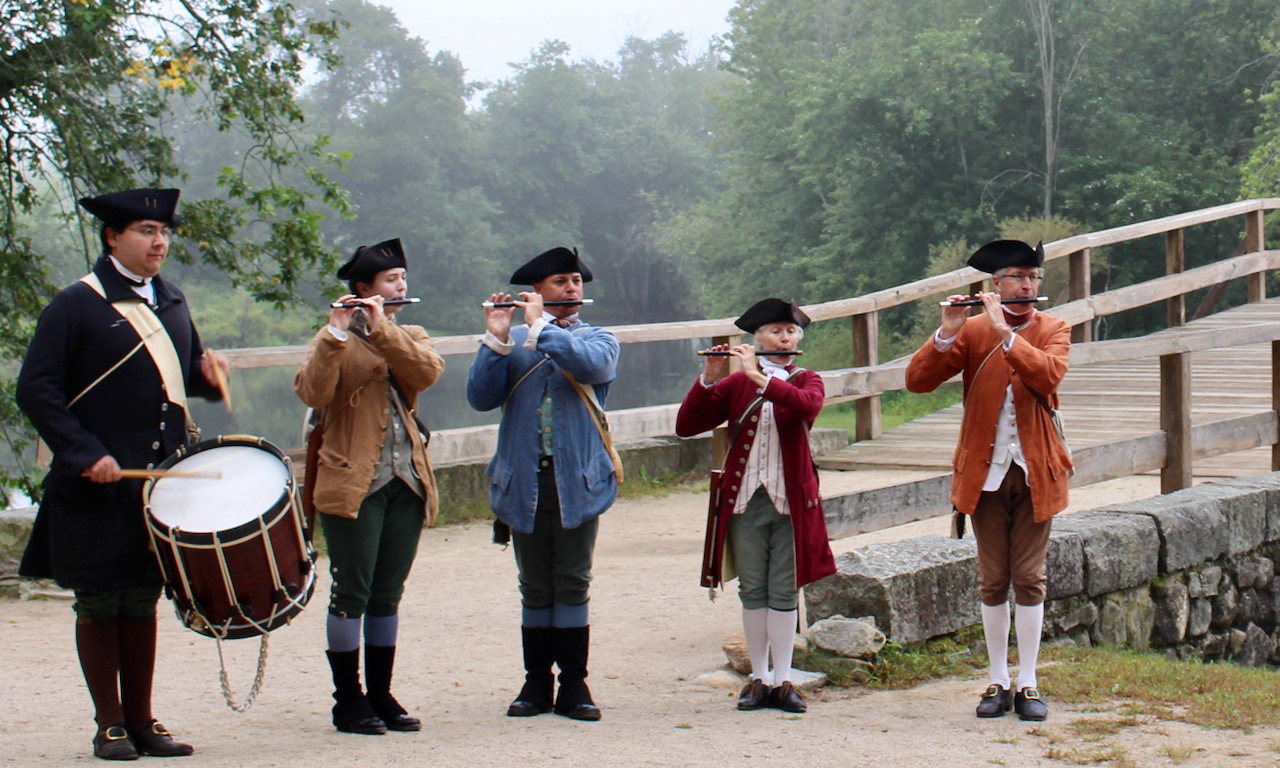Established by the National Park Service on September 21, 1959, Minute Man National Historical Park in Lexington, Lincoln, and Concord, Massachusetts preserves and interprets the significant historic structures and landscapes associated with the opening of the American Revolution which lie along the route of battle of April 19, 1775, and fosters understanding of the events, causes, and consequences of the American Revolution.
Minute Man National Historical Park also preserves and interprets The Wayside, home of major 19th-century American authors.
Comprising 1,038 acres, the park attracts more than one million visitors annually. Minute Man Visitor Center in Lincoln and the North Bridge Visitor Center in Concord are open seasonally.
The park includes the following four distinct units:
Battle Road: A five-mile trail connecting historic sites from Meriam’s Corner in Concord to the eastern boundary of the park in Lexington. Much of the trail follows the original remnants of the Battle Road where thousands of Colonial Militia and British Regulars fought a bloody engagement on April 19, 1775. In some areas the trail leaves the historic road to follow the route of the Minute Men traversing farming fields, wetlands, and forest.
North Bridge: Referred to as the location of the “shot heard round the world,” and the beginning of the American War for Independence, it is here that on the morning of April 19, 1775 Colonial Militia from Concord and surrounding towns exchanged gunfire with British regulars guarding the critical river crossing. Although the fighting at the North Bridge lasted only a few seconds, it marked the beginning of a massive battle that raged over 16 miles along the Bay Road from Boston to Concord and included some 1,700 British regulars and over 4,000 Colonial militia.
The Wayside: The successive home of authors Louisa May Alcott, Nathaniel Hawthorne, and Harriett Lothrop (also known as Margaret Sidney), whose lives and works contributed to a unique American literary identity that emerged from the experiences of their Revolutionary War ancestors.
Barrett Farm: About two miles from the North Bridge, the centuries-old wooden farmhouse was the home of Colonel James Barrett and his family. On April 19, 1775 British Regulars searched Barrett’s farm looking for stores of artillery and ammunition. Though they found nothing there, Colonel Barrett and members of his family played significant roles in the first battle of the American Revolutionary War.

